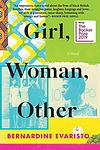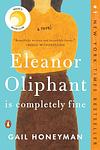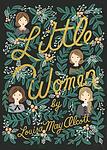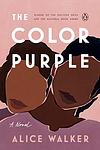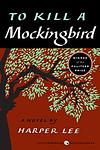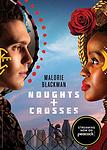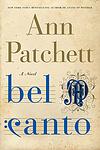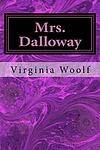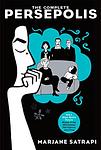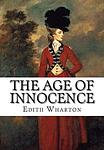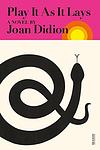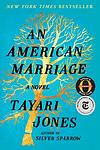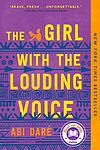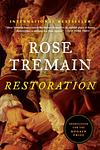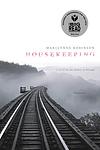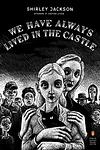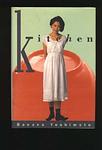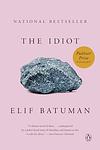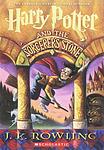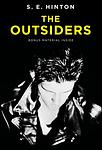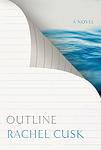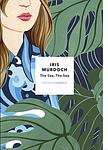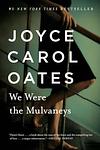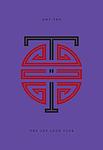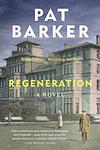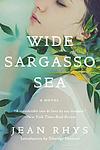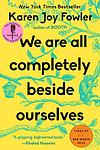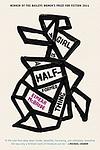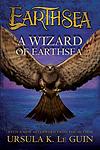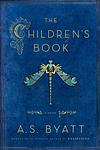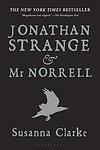100 Best Books to Read by Women Authors
This is one of the 284 lists we use to generate our main The Greatest Books list.
-
A Little Life by Hanya Yanagihara
The novel is a deeply moving portrayal of four friends in New York City, spanning over several decades. It primarily focuses on Jude, a man with a mysterious and traumatic past, who struggles with physical disability and emotional trauma. The story explores themes of friendship, love, trauma, suffering, and the human will to endure in spite of life's hardships. It is an epic tale of heartbreak and despair but also of resilience and enduring love.
-
Pride and Prejudice by Jane Austen
Set in early 19th-century England, this classic novel revolves around the lives of the Bennet family, particularly the five unmarried daughters. The narrative explores themes of manners, upbringing, morality, education, and marriage within the society of the landed gentry. It follows the romantic entanglements of Elizabeth Bennet, the second eldest daughter, who is intelligent, lively, and quick-witted, and her tumultuous relationship with the proud, wealthy, and seemingly aloof Mr. Darcy. Their story unfolds as they navigate societal expectations, personal misunderstandings, and their own pride and prejudice.
-
Normal People by Sally Rooney
"Normal People" is a novel that explores the complex relationship between two high school students from different social classes in a small town in Ireland. Despite their contrasting backgrounds, they form a strong bond that continues into their university years at Trinity College. The narrative follows their journey, filled with misunderstandings, miscommunications, and emotional intimacy, as they navigate their way through love, friendship, mental health issues, and the struggles of growing up.
-
Wuthering Heights by Emily Brontë
This classic novel is a tale of love, revenge and social class set in the Yorkshire moors. It revolves around the intense, complex relationship between Catherine Earnshaw and Heathcliff, an orphan adopted by Catherine's father. Despite their deep affection for each other, Catherine marries Edgar Linton, a wealthy neighbor, leading Heathcliff to seek revenge on the two families. The story unfolds over two generations, reflecting the consequences of their choices and the destructive power of obsessive love.
-
Girl, Woman, Other by Bernardine Evaristo
The novel is a vibrant portrayal of the lives of twelve different characters, primarily black British women, spanning over a century. Each character has their own unique story, tackling issues such as feminism, politics, sexuality, and identity. The narrative is a blend of poetry and prose, exploring the interconnected lives of these women and their personal struggles and triumphs. It is a powerful exploration of race, gender, and the changing face of Britain.
-
Eleanor Oliphant Is Completely Fine by Gail Honeyman
The book follows the life of an eccentric and socially awkward woman in her early thirties, whose regimented and solitary existence is disrupted when she develops an unlikely friendship with a bumbling IT guy from her office. After they save an elderly man who has collapsed on the street, the trio forms a bond that ultimately leads her to confront her troubled past. As she grapples with her mother's cruelty and the secrets that have haunted her for years, she learns that opening up to others can be the key to healing and that she is capable of finding love and companionship. Through this journey of self-discovery, she realizes that she can break free from her previously lonely and routine life, challenging the notion that she is completely fine as she is.
-
Queenie by Candice Carty-Williams
The novel centers on a young Jamaican British woman living in London, navigating the complexities of her identity, mental health, and relationships. After a painful breakup with her long-term boyfriend, she finds herself in a downward spiral, struggling with her self-worth and the pressures of societal expectations. As she deals with workplace discrimination, problematic dating experiences, and familial issues, she embarks on a journey of self-discovery and healing, supported by a cast of well-drawn friends and family members. The story offers a candid and often humorous exploration of contemporary issues such as race, feminism, and mental health, while providing a nuanced portrayal of the protagonist's resilience and growth.
-
Little Women by Louisa May Alcott
This classic novel follows the lives of the four March sisters - Meg, Jo, Beth, and Amy - as they navigate the challenges and joys of adolescence and adulthood in 19th century New England. As they grow, they grapple with issues of poverty, gender roles, love, and personal identity, each in her own unique way. The story is a testament to the power of family, sisterhood, and female resilience in a time of societal constraints.
-
My Brilliant Friend by Elena Ferrante
This novel tells the story of two friends, Elena and Lila, growing up in a poor neighborhood in Naples, Italy in the 1950s. Their intense, complicated friendship is marked by competition, mutual respect, and deep affection. As they navigate the challenges of adolescence, including family drama, academic struggles, and romantic entanglements, their bond is tested and transformed. The narrative explores themes of female friendship, social class, education, and the struggle for personal autonomy in a patriarchal society.
-
Oranges are not the only Fruit by Jeanette Winterson
This novel follows the coming-of-age story of a young girl adopted by a religious fanatic, who believes her daughter is destined to become a missionary. As the protagonist grows up, she begins to question her mother's strict religious beliefs and discovers her own sexuality. The book explores themes of identity, love, and religion, as the protagonist grapples with her place in the world and her evolving understanding of herself.
-
The Color Purple by Alice Walker
Set in the early 20th century, the novel is an epistolary tale of a young African-American woman named Celie, living in the South. She faces constant abuse and hardship, first from her father and then from her husband. The story unfolds through her letters written to God and her sister Nettie, revealing her emotional journey from oppression to self-discovery and independence, aided by her relationships with strong women around her. The narrative explores themes of racism, sexism, domestic violence, and the power of sisterhood and love.
-
White Teeth by Zadie Smith
This novel follows the lives of two friends, a working-class Englishman and a Bangladeshi Muslim, living in London. The story explores the complex relationships between people of different races, cultures, and generations in modern Britain, with themes of identity, immigration, and the cultural and social changes that have shaped the country. The narrative is enriched by the characters' personal histories and the historical events that have shaped their lives.
-
To Kill a Mockingbird by Harper Lee
Set in the racially charged South during the Depression, the novel follows a young girl and her older brother as they navigate their small town's societal norms and prejudices. Their father, a lawyer, is appointed to defend a black man falsely accused of raping a white woman, forcing the children to confront the harsh realities of racism and injustice. The story explores themes of morality, innocence, and the loss of innocence through the eyes of the young protagonists.
-
Noughts and Crosses by Malorie Blackman
"Noughts and Crosses" is a thought-provoking novel set in a dystopian society where racial segregation is reversed. It follows the lives of two main characters: a girl from the ruling class (Crosses) and a boy from the underclass (Noughts). Despite their different backgrounds, they form a deep bond that eventually turns into a romantic relationship, challenging the societal norms and prejudices. The novel explores themes of love, racism, and power, offering a poignant commentary on the repercussions of societal divisions.
-
Heartburn by Nora Ephron
The book is a witty and autobiographical novel that follows the life of Rachel Samstat, a pregnant food writer living in Washington D.C., who discovers her husband is having an affair with another woman. As her marriage crumbles, Rachel must navigate the complexities of love, betrayal, and heartache, all while dealing with her own impending motherhood. Through a blend of humor and pathos, the protagonist uses her sharp wit and passion for cooking to cope with her personal turmoil, sharing recipes and reflections along the way, ultimately finding strength and self-discovery amidst the chaos of her dissolving relationship.
-
Swimming Home by Deborah Levy
In "Swimming Home," a vacation in the idyllic French Riviera is disrupted when a family of British tourists encounters an enigmatic woman named Kitty Finch, who swims naked into the villa's pool. Her presence becomes a catalyst for the unraveling of relationships, as she becomes intimately involved with the family, particularly the poet father. The novel explores themes of depression, the complexities of the human psyche, and the impact of an outsider on the fragile dynamics of family life, all while maintaining a tense, poetic atmosphere that culminates in a haunting conclusion.
-
Wolf Hall by Hilary Mantel
The novel is a historical fiction set in the 1500s, during the reign of King Henry VIII. The story is told from the perspective of Thomas Cromwell, a man of humble beginnings who rises to become the King's chief minister. The narrative explores the political and religious upheavals of the time, including King Henry's break with the Catholic Church and his controversial marriage to Anne Boleyn. The protagonist's cunning, ambition, and survival instincts are central to the plot as he navigates the treacherous waters of the Tudor court.
-
Bel Canto by Ann Patchett
In an unnamed South American country, a lavish birthday party is thrown for a powerful businessman, with a famous opera singer as the guest of honor. The party is interrupted by a group of terrorists who take everyone hostage, demanding the release of their imprisoned comrades. As weeks turn into months, the hostages and their captors form unexpected bonds. The story explores the relationships that develop under these extraordinary circumstances, and the transformative power of music and love.
-
The Handmaid's Tale by Margaret Atwood
Set in a dystopian future, this novel presents a society where women are stripped of their rights and are classified into various roles based on their fertility and societal status. The protagonist is a handmaid, a class of women used solely for their reproductive capabilities by the ruling class. The story is a chilling exploration of the extreme end of misogyny, where women are reduced to their biological functions, and a critique of religious fundamentalism.
-
Selected Stories of Alice Munro by Alice Munro
This collection of short stories offers a comprehensive view of the author's narrative talent, showcasing her ability to create complex characters and situations that reflect the human condition. Set in various locations, from small Canadian towns to exotic foreign locales, each story delves into the intricate relationships, personal struggles, and quiet triumphs of its characters. The author's writing is marked by her keen observation, psychological insight, and the ability to convey the extraordinary within the ordinary, making each story a unique exploration of life's complexities.
-
The Power by Naomi Alderman
"The Power" by Naomi Alderman is a speculative fiction novel that imagines a world where women develop the ability to produce electrical shocks from their bodies, giving them a newfound physical power over men. The novel follows the lives of four characters as they navigate this new reality and the societal and political upheaval that comes with it. Through their experiences, the book explores themes of gender, power, and the corrupting nature of authority.
-
I Capture the Castle by Dodie Smith
"I Capture the Castle" is a coming-of-age novel that tells the story of 17-year-old Cassandra Mortmain and her eccentric family living in a dilapidated English castle during the 1930s. Cassandra's father is a reclusive writer suffering from writer's block and her stepmother is a bohemian artist. The family's life changes dramatically when two American brothers inherit the estate. The novel, written in diary format, explores themes of love, poverty, and the transition from adolescence to adulthood.
-
City Of Girls by Elizabeth Gilbert
The novel is a captivating exploration of the life of Vivian Morris, a young woman who arrives in 1940s New York City with a tarnished college record and little direction. Thrust into the vibrant world of a quirky theater company, Vivian is swept up in a whirlwind of showbiz, glamour, and adventure. As she navigates relationships, scandal, and self-discovery, the story unfolds through her reflections as an older woman, offering a poignant look at the intersection of youth, freedom, and the complexities of female sexuality. The narrative is both a love letter to a bygone era and a deeply personal journey of a woman finding her place in a rapidly changing world.
-
The Five by Hallie Rubenhold
"The Five" is a historical non-fiction book that delves into the lives of the five women who were infamously murdered by Jack the Ripper in the East End of London in 1888. The work challenges the long-standing myth that the victims were all prostitutes, instead painting a vivid picture of the harsh realities faced by women in Victorian England. Through meticulous research, the book reconstructs their personal histories, exploring their backgrounds, the societal conditions that contributed to their unfortunate fates, and the misogyny that has overshadowed their stories. The narrative serves as both a poignant tribute to these women and a critical examination of the historical narratives that have marginalized them.
-
The Secret History by Donna Tartt
A group of six classics students at a small, elite Vermont college, led by a charismatic professor, become entranced by the study of Greek culture and decide to recreate a Dionysian ritual, which ends in a tragic accident. The group, bound by their shared secret, begins to unravel as paranoia and guilt take hold. The novel explores themes of beauty and terror, the allure of the esoteric, and the destructive consequences of obsession.
-
Trans by Juliet Jacques
"Trans" is a candid and poignant memoir that chronicles the personal journey of transitioning from male to female, exploring the complexities of gender identity and the challenges faced by transgender individuals. The author offers an intimate look into their experiences with gender dysphoria, the medical processes of transitioning, and the social implications of living as their true self. The narrative also delves into the broader cultural and political issues surrounding trans rights and representation, providing a nuanced perspective on the intersection of personal and political in the quest for authenticity and acceptance in society.
-
Jane Eyre by Charlotte Bronte
The novel follows the life of Jane Eyre, an orphan who is mistreated by her relatives and sent to a charity school. As she grows up, Jane becomes a governess at Thornfield Hall, where she falls in love with the brooding and mysterious Mr. Rochester. However, she soon learns of a dark secret in his past that threatens their future together. The story is a profound exploration of a woman's self-discovery and her struggle for independence and love in a rigid Victorian society.
-
The Street by Ann Petry
The novel is a poignant exploration of the struggles faced by a young African American single mother living in Harlem during the 1940s. It delves into the systemic racism and sexism that constrict her life, as she endeavors to create a better future for her son amidst the poverty, violence, and oppressive social forces of the urban landscape. The narrative follows her tenacious fight against the insurmountable barriers imposed by a society that is indifferent to her dreams and her dignity, painting a vivid portrait of resilience and the human spirit's quest for freedom.
-
Mrs. Dalloway by Virginia Woolf
The novel chronicles a day in the life of Clarissa Dalloway, a high-society woman in post-World War I England, as she prepares for a party she is hosting that evening. Throughout the day, she encounters various characters from her past, including a former suitor and a shell-shocked war veteran. The narrative jumps back and forth in time and in and out of different characters' minds, exploring themes of mental illness, existentialism, and the nature of time.
-
The Lowland by Jhumpa Lahiri
The book chronicles the divergent paths of two Bengali brothers whose lives are marked by a tragic event during the tumultuous 1960s in Kolkata. The younger brother becomes involved in the Naxalite movement, leading to his untimely death, while the elder brother, a scientist, migrates to America, carrying the weight of grief and responsibility. The narrative spans across generations, exploring the themes of political activism, family ties, and the immigrant experience as it delves into the enduring effects of loss and the search for identity amidst the crosscurrents of history and culture.
-
The Luminaries by Eleanor Catton
Set during the New Zealand Gold Rush of the 19th century, this novel follows Walter Moody, a prospector who stumbles upon a secret meeting of twelve local men who are trying to solve a series of unsolved crimes. As the story unfolds, it becomes clear that the crimes, which include a rich man's disappearance, a prostitute's attempted suicide, and a huge fortune found in a drunkard's cottage, are all interconnected. The novel's complex narrative structure, which uses astrology to organize its characters and events, adds another layer of intrigue to the story.
-
Half of a Yellow Sun by Chimamanda Ngozi Adichie
The novel is set in Nigeria during the Biafran War, exploring the impact of the conflict on the lives of its characters. The story is told from the perspective of three characters: a young houseboy, a radical university professor, and the professor's wealthy lover. The narrative delves into themes of love, race, and war, offering a vivid depiction of the horrors of conflict and the resilience of the human spirit.
-
Five Steps To Happy by Ella Dove
This novel follows the journey of a young woman whose life is turned upside down after a tragic accident results in the amputation of her leg. As she grapples with her new reality, she embarks on a path of self-discovery and healing. With the support of a cast of quirky characters she meets at a rehabilitation center, including a charming fellow patient, she learns to navigate her challenges with resilience and humor. Her story is a testament to the human spirit's ability to adapt and find happiness, even in the face of life-altering changes, as she takes incremental steps towards rebuilding her life and finding joy once again.
-
Middlemarch by George Eliot
Set in the fictitious English town of Middlemarch during the early 19th century, the novel explores the complex web of relationships in a close-knit society. It follows the lives of several characters, primarily Dorothea Brooke, a young woman of idealistic fervor, and Tertius Lydgate, an ambitious young doctor, who both grapple with societal expectations, personal desires, and moral dilemmas. Their stories intertwine with a rich tapestry of other townsfolk, reflecting themes of love, marriage, ambition, and reform, making a profound commentary on the human condition.
-
Their Eyes Were Watching God by Zora Neale Hurston
This novel follows the life of Janie Crawford, a young African-American woman, in the early 20th century. She embarks on a journey through three marriages and self-discovery while challenging the societal norms of her time. The narrative explores her struggle for personal freedom, fulfillment, and identity against the backdrop of racism and gender expectations, ultimately emphasizing the importance of independence and personal growth.
-
Gone With the Wind by Margaret Mitchell
Set against the backdrop of the American Civil War and Reconstruction era, this novel follows the life of a young Southern belle, who is known for her beauty and charm. Her life takes a turn when she is forced to make drastic changes to survive the war and its aftermath. The story revolves around her struggle to maintain her family's plantation and her complicated love life, especially her unrequited love for a married man, and her tumultuous relationship with a roguish blockade runner.
-
Persepolis by Marjane Satrapi
This graphic novel is a memoir that provides a personal account of the author's childhood and young adult years in Iran during and after the Islamic revolution. The story portrays the impact of war, political upheaval, and religious extremism on ordinary people, while also exploring themes of identity, resilience, and the power of storytelling. Despite the harsh realities the protagonist faces, the narrative also includes moments of humor and warmth, providing a nuanced view of life in Iran during this tumultuous period.
-
And Then There Were None by Agatha Christie
In this classic mystery novel, ten strangers are invited to a secluded mansion on a private island by a mysterious host who is nowhere to be found. As the guests begin to die one by one, mirroring a creepy nursery rhyme that hangs in each of their rooms, they realize that the killer is among them. As suspicion and fear escalate, they must uncover the murderer before no one remains.
-
Brick Lane by Monica Ali
This novel tells the story of a Bangladeshi woman named Nazneen who moves to London at the age of 18 for an arranged marriage to a man 20 years her senior. The narrative explores her life in the city, her struggles with her unhappy marriage, her affair with a young radical, and her attempts to reconcile her traditional upbringing with her new surroundings. The book also explores the lives of immigrants in the UK, the clash of cultures, and the struggle for identity.
-
How to be both by Ali Smith
This novel is a dual narrative that explores the interconnected stories of a 15th-century Italian Renaissance artist named Francesco del Cossa and a modern-day teenager named George. The book is divided into two parts, one set in the past and one in the present, and the order in which they are read can change the reader's interpretation of the story. The novel delves into themes of art, gender, sexuality, and the fluidity of identity, while also examining the ways in which we perceive and understand the world around us.
-
Fingersmith by Sarah Waters
The novel is a gripping tale set in Victorian England, revolving around two young women, a petty thief and a rich heiress, whose lives intertwine in unforeseen ways. The thief is part of a con to defraud the heiress of her fortune, but as the plot thickens, the lines between deception and truth, loyalty and betrayal, love and manipulation get blurred. The narrative is filled with unexpected twists and turns, exploring themes of gender, sexuality, and class, and keeps the readers on the edge till the end.
-
Frankenstein by Mary Shelley
This classic novel tells the story of a young scientist who creates a grotesque but sentient creature in an unorthodox scientific experiment. The scientist, horrified by his creation, abandons it, leading the creature to seek revenge. The novel explores themes of ambition, responsibility, guilt, and the potential consequences of playing God.
-
A Spool Of Blue Thread by Anne Tyler
The novel delves into the complex dynamics of the Whitshank family, spanning across four generations, living in Baltimore, Maryland. The narrative weaves through time, unraveling the family's secrets, rivalries, and bonds as it focuses on Abby and Red, the aging parents, and their children who grapple with their own identities and relationships. The story explores themes of legacy, memory, and the nuanced fabric of familial love, all symbolized by the titular spool of blue thread, which holds sentimental value and represents the threads of stories that connect the family members to each other and to their shared past.
-
Beloved by Toni Morrison
This novel tells the story of a former African-American slave woman who, after escaping to Ohio, is haunted by the ghost of her deceased daughter. The protagonist is forced to confront her repressed memories and the horrific realities of her past, including the desperate act she committed to protect her children from a life of slavery. The narrative is a poignant exploration of the physical, emotional, and psychological scars inflicted by the institution of slavery, and the struggle for identity and self-acceptance in its aftermath.
-
The Age of Innocence by Edith Wharton
Set in the 1870s, the novel revolves around Newland Archer, a young lawyer from New York's high society, who is engaged to the beautiful and conventional May Welland. His life takes a turn when he meets May's cousin, the Countess Ellen Olenska, who has returned from Europe after leaving her scandalous husband. Torn between his duty and passion, Archer struggles with the constraints of the society he is a part of. The book offers a vivid portrayal of the struggle between individual desires and societal expectations in the upper-class New York society of the late 19th century.
-
The Secret Garden by Frances Hodgson Burnett
A young, spoiled and unloved girl is sent to live with her reclusive uncle in a large, lonely house after the death of her parents. Through the discovery and cultivation of a hidden, neglected garden, she befriends a local boy and her sickly cousin, and the three children find healing and transformation through their friendship and the magic of the garden.
-
The Garden Party And Other Stories by Katherine Mansfield
This collection of short stories delves into the complexities of human emotions and social dynamics through the lens of early 20th-century life. The narratives, often focusing on moments of epiphany or poignant realizations, explore themes such as class distinction, innocence, and the passage of time. The titular story captures the contrast between the carefree world of the wealthy and the harsh realities of the working class, as seen through the eyes of a young girl. Throughout the anthology, the author's keen observations and vivid prose invite readers to reflect on the subtleties of everyday experiences and the intricate tapestry of human relationships.
-
Rebecca by Daphne du Maurier
A young woman marries a wealthy widower and moves into his large English country house. She quickly realizes that the memory of her husband's first wife, Rebecca, haunts every corner of the estate. The housekeeper's obsessive devotion to Rebecca and the mysterious circumstances of her death continue to overshadow the second wife's attempts to make a happy life with her husband. As secrets about Rebecca's life and death are revealed, the new wife must grapple with her own identity and place within the household.
-
The God of Small Things by Arundhati Roy
This novel is a poignant tale of fraternal twins, a boy and a girl, who navigate through their childhood in Kerala, India, amidst a backdrop of political unrest and societal norms. The story, set in 1969, explores the complexities of their family's history and the tragic events that shape their lives. Their mother's transgression of caste and societal norms by having an affair with an untouchable leads to disastrous consequences, revealing the oppressive nature of the caste system and the destructive power of forbidden love. The novel also delves into themes of postcolonial identity, gender roles, and the lingering effects of trauma.
-
We Need To Talk About Kevin by Lionel Shriver
"We Need To Talk About Kevin" is a gripping and unsettling novel that explores the complex relationship between a mother and her troubled son. Told through a series of letters written by the mother to her estranged husband, the book delves into the aftermath of a horrific school massacre committed by Kevin. As the mother reflects on her own guilt, fears, and doubts, she questions whether her own actions and choices played a role in shaping Kevin's violent nature. This thought-provoking and chilling narrative explores themes of nature versus nurture, parental responsibility, and the profound impact of tragedy on a family.
-
Play It As It Lays by Joan Didion
The novel centers around a woman named Maria Wyeth, a former model and actress, who is drifting through life in the 1960s Hollywood scene. As she struggles with a failing marriage, a difficult relationship with her daughter, and a career that's spiraling downwards, she grapples with existential despair. Told in a series of fragmented narratives, the story reveals Maria's mental breakdown, her self-destructive behavior, and her desperate attempts to find meaning in a seemingly meaningless world.
-
Mary Barton by Elizabeth Gaskell
The novel is a poignant social commentary set in the industrial city of Manchester during the 1840s, exploring the harsh realities of working-class life. It follows the story of the titular character, a young woman whose life is marred by personal tragedy, including the loss of her loved ones to poverty and illness. As she navigates the chasm between the poor mill workers and the wealthy mill owners, the narrative delves into themes of love, class conflict, and the struggle for justice. The protagonist becomes embroiled in a dramatic tale of murder and mistaken identity, which ultimately leads to a quest for forgiveness and reconciliation amidst the prevailing social injustices of the time.
-
The Summer Book by Tove Jansson
This book tells the story of an elderly artist and her six-year-old granddaughter as they spend a summer together on a tiny island in the Gulf of Finland. Their interactions, conversations, and explorations of the natural world around them form a delicate and deeply touching portrayal of the bond between generations, the beauty of the surrounding landscape, and the quiet, introspective moments that define our lives. The narrative is a series of vignettes, each a meditation on life, death, nature, and the human condition.
-
Cold Comfort Farm by Stella Gibbons
When a young, sophisticated woman is suddenly orphaned and left penniless, she decides to live with her eccentric relatives on their rundown farm. Using her urban sensibilities and wit, she sets about bringing order to the chaos and improving the lives of her relatives. Through her efforts, she manages to transform the gloomy, grim farm into a place of happiness and productivity. This novel is a hilarious parody of romantic, pastoral novels and is filled with eccentric characters and absurd situations.
-
A Visit From The Goon Squad by Jennifer Egan
"A Visit from the Goon Squad" is an interconnected collection of stories about a group of characters whose lives intersect in the music industry. The narrative spans several decades, tracing the characters' journey from their youth to middle age. It explores themes of time, change, and the impact of technology on human relationships and the music industry. The novel is known for its experimental structure, including a chapter written as a PowerPoint presentation.
-
The Help by Kathryn Stockett
Set in the early 1960s in Jackson, Mississippi, the story revolves around three main characters: two black maids and a young white woman. The maids, who have spent their lives taking care of white families and raising their children, agree to share their experiences with the young woman, who is an aspiring writer. The book offers a poignant and humorous look at the complex relationships between these women, while also exploring the racial tensions and social changes of the era.
-
Life After Life by Kate Atkinson
"Life After Life" follows the story of Ursula Todd who is born and dies repeatedly in February 1910. Each time Ursula dies, her life restarts, with each successive life bringing different circumstances and decisions. The novel explores themes of fate, free will, and the infinite possibilities of existence. Through Ursula's many lives, the narrative provides different perspectives on significant historical events, including both World Wars.
-
The Time Traveler's Wife by Audrey Niffenegger
The novel tells the story of a man with a genetic disorder that causes him to time travel unpredictably, and his wife, an artist who has to cope with his frequent absences and dangerous experiences. Their love story endures many separations and dangerous experiences due to his condition. The story's central theme is the effects of time travel on their marriage and their passionate love for each other.
-
Standard Deviation by Katherine Heiny
The novel is a witty and poignant exploration of a complex marriage between an endearing couple navigating the quirks of their relationship and the challenges of raising a son with Asperger's syndrome. The husband, grappling with the eccentricities of his younger second wife and the demands of his precocious son, finds himself reflecting on his past and the starkly different personality of his first wife. The narrative delves into themes of love, family dynamics, and the unpredictable nature of life, as the characters confront infidelity, friendship, and the pursuit of happiness amidst the chaos of everyday life.
-
An American Marriage by Tayari Jones
The book is a profound exploration of love, loyalty, and justice, centered on a young African American couple whose lives are shattered when the husband is wrongfully convicted of a crime he didn't commit. The narrative delves into the emotional turmoil that ensues, as the wife struggles with her obligations to her husband and her own desires for happiness. Through a series of letters exchanged between the couple during the husband's incarceration, and the perspectives of those entangled in their plight, the story examines the complexities of marriage, the impact of racial injustice on personal relationships, and the resilience required to overcome profound adversity.
-
Small Island by Andrea Levy
"Small Island" is a historical novel that explores the intertwined histories of Jamaica and the UK, as well as the themes of race, empire, and migration. The story is set in 1948 and is told from four different perspectives: two Jamaican immigrants, Hortense and Gilbert, who move to England after World War II, and an English couple, Queenie and Bernard. The narrative explores the racial tension, discrimination, and culture shock that the immigrants face in their new home, while also delving into the complexities of war, identity, and the British Empire.
-
The Cazalet Chronicles by Elizabeth Jane Howard
The series is a family saga that spans generations, focusing on the lives, loves, and tribulations of the Cazalet family. Set primarily between the 1930s and 1950s, the narrative delves into the personal and societal impacts of events like World War II on the extended family. Through vivid characterizations and intricate relationships, the story explores themes of time, change, and the endurance of family bonds against the backdrop of a rapidly evolving England. Each book in the series captures a different era, reflecting the shifting dynamics within the family and the country at large.
-
The Girl With The Louding Voice by Abi Daré
The novel follows the inspiring journey of a young Nigerian girl who yearns for an education and a better life beyond the confines of her small village and the oppressive customs that limit women's opportunities. Despite being trapped in a series of servitudes after being sold into marriage at a young age, she refuses to let her dreams be silenced. With indomitable spirit and determination, she navigates through a myriad of challenges, using her "louding voice"—her bold, resolute inner voice—to speak out for herself and others like her, in pursuit of her ambition to learn and to be heard in a world that often tries to quiet the voices of girls and women.
-
My Sister, The Serial Killer by Oyinkan Braithwaite
In this darkly comedic novel, a nurse named Korede finds herself repeatedly cleaning up after her sister Ayoola, who has a disturbing habit of killing her boyfriends. As Ayoola's murderous tendencies escalate, Korede is torn between her loyalty to her sister and her growing concern for the next potential victim. As secrets unravel and tensions rise, the sisters' bond is put to the ultimate test, leading to a gripping and unexpected conclusion.
-
Who Will Run The Frog Hospital by Lorrie Moore
The novel explores the complexities of female friendship and the nostalgia for adolescence through the eyes of its protagonist, Berie Carr, who reminisces about her teenage years while on a trip to Paris with her husband. The story delves into Berie's memories of her intense friendship with Sils, her best friend during her formative years in upstate New York. Amidst the backdrop of a 1970s summer job at an amusement park, the narrative captures the poignant and often painful transition from the innocence of childhood to the disillusionment of adulthood, highlighting the formative experiences that shape us and the enduring impact of our earliest bonds.
-
Happenstance by Carol Shields
The novel explores the lives of a married couple by delving into their individual experiences during a five-day separation. The wife, a quilt artist, attends a craft convention in a distant city, where she confronts her own ambitions and reflects on her identity outside of her domestic life. Meanwhile, at home, the husband, a historian, takes on the responsibilities of domestic life and childcare, while also facing his own professional and personal uncertainties. The narrative alternates between their perspectives, providing a nuanced examination of marriage, gender roles, and the complexities of personal growth and self-discovery within the framework of a long-term relationship.
-
Restoration by Rose Tremain
"Restoration" is a historical novel set in 17th-century England during the reign of King Charles II. The story follows Robert Merivel, a young physician who rises to favor in the royal court only to fall from grace due to his own vanity and indiscretions. Merivel's journey is one of personal growth and self-discovery as he navigates the complexities of love, friendship, and the pursuit of happiness. Along the way, he encounters a rich tapestry of characters and experiences that reflect the moral and social dilemmas of the Restoration period, ultimately leading him to seek redemption and a deeper understanding of what it means to lead a meaningful life.
-
Housekeeping by Marilynne Robinson
The novel explores the life of two sisters, Ruth and Lucille, who are raised by a series of relatives in a small, secluded town in Idaho after their mother's suicide. The girls' lives are profoundly affected by the eccentric and transient lifestyle of their aunt Sylvie, who becomes their guardian. The narrative delves deeply into themes of family, identity, womanhood, and the impermanence of life, ultimately leading to a divide between the sisters as they choose different paths in life.
-
We Have Always Lived in the Castle by Shirley Jackson
This novel tells the story of the Blackwood sisters, Merricat and Constance, who live in isolation in their family mansion, following the mysterious death of their parents due to arsenic poisoning. The sisters' lives are disrupted when their estranged cousin, Charles, arrives with intentions of stealing their fortune. The story is a chilling exploration of family secrets, mental illness, and the destructive power of mob mentality.
-
Kitchen by Banana Yoshimoto
The book is a poignant tale of love, life, and loss intertwined with the themes of food and kitchens. The narrative follows a young woman who, after the death of her grandmother, finds solace in the home of her friend and his transgender mother. As she navigates her grief, she also grapples with her growing feelings for her friend. The story explores the complexities of relationships, the concept of home, and the healing power of cooking.
-
The Idiot by Elif Batuman
The novel follows the experiences of Selin, a daughter of Turkish immigrants, during her freshman year at Harvard University in the mid-1990s. As she navigates the complexities of language, love, and her own identity, Selin begins an email correspondence with Ivan, a senior mathematics student. This digital romance and her quest for understanding lead her through various intellectual and emotional adventures, from teaching in Hungary to grappling with the nuances of communication and the nature of storytelling. The book is a coming-of-age tale that humorously captures the challenges of self-discovery and the transition into adulthood.
-
Harry Potter And The Philosopher's Stone by J. K Rowling
The story follows a young boy, Harry Potter, who learns on his 11th birthday that he is the orphaned son of two powerful wizards and possesses unique magical powers of his own. He is summoned from his life as an unwanted child to become a student at Hogwarts, an English boarding school for wizards. There, he meets several friends who become his closest allies and help him discover the truth about his parents' mysterious deaths, the dark wizard who wants to kill him, and the magical stone that holds immense power.
-
Me Before You by Jojo Moyes
The novel centers around the transformative bond that forms between a quirky and creative young woman who becomes a caregiver for a wealthy young banker left paralyzed from an accident. Despite their contrasting backgrounds and initial reservations, they develop a deep connection that challenges their preconceived notions of love, life, and what it means to truly live. As she becomes determined to show him that life is worth living, they embark on a series of adventures together that lead to unexpected consequences, forcing them to confront what they are willing to sacrifice for love and each other.
-
Hamnet by Maggie O'Farrell
"Hamnet" is a deeply moving and beautifully written historical novel that reimagines the life of a young boy, Hamnet, who is the son of a glovemaker in Stratford-upon-Avon. The boy tragically dies at the age of 11, which leaves a profound impact on his family, particularly his father, who is inspired to write one of the world's most famous plays. The narrative alternates between the time leading up to Hamnet's death and the aftermath, providing an intimate portrait of grief, love, and the power of art.
-
The Girl With The Pearl Earring by Tracy Chevalier
Set in 17th century Delft, the novel revolves around a young woman who becomes a maid in the household of the famous painter Johannes Vermeer. As she becomes immersed in the artist's world, she grows close to Vermeer, eventually becoming the subject of one of his most renowned paintings. The story explores themes of art, beauty, and the complex dynamics of power, class, and desire, as it follows the protagonist's journey from innocence to awakening amidst the rich tapestry of Dutch Golden Age society.
-
The Outsiders by S. E. Hinton
The book is a coming-of-age story focusing on a group of teenage boys living in a poor neighborhood. They are constantly at odds with the affluent kids from the other side of town, leading to violent gang fights. The story, narrated by a 14-year-old boy, explores themes such as class conflict, friendship, and the loss of innocence. It also delves into the struggles of the protagonist as he grapples with his identity, societal expectations, and the harsh realities of life.
-
The Price Of Salt by Patricia Highsmith
The novel centers around a young aspiring set designer working in a department store in 1950s New York who becomes infatuated with an elegant and sophisticated older woman, a customer who is trapped in a loveless, high-society marriage. As their friendship develops into a deeper bond, they embark on a road trip across the USA, a journey that defies the era's social norms and leads them to confront the complexities of their feelings and the repercussions of their unconventional relationship. The story explores themes of love, freedom, and the price one must pay for choosing to live authentically in the face of societal expectations.
-
The Prime of Miss Jean Brodie by Muriel Spark
The novel is set in 1930s Edinburgh and follows the story of six girls under the tutelage of an unconventional teacher, Miss Jean Brodie. Miss Brodie, in her prime, takes it upon herself to educate the girls about life, love, politics, and art, often disregarding the traditional curriculum. The narrative explores the influence of Miss Brodie on the girls, the consequences of her nonconformist teachings, and the ultimate betrayal that leads to her downfall.
-
Room by Emma Donoghue
"Room" by Emma Donoghue is a novel about a young woman named Ma who has been held captive in a small room for seven years with her five-year-old son Jack. The story is told from Jack's point of view as he struggles to understand the world outside of Room and adjust to life after their escape. The novel explores themes of resilience, trauma, and the power of love and imagination.
-
Outline by Rachel Cusk
"Outline" is a novel that follows the story of a woman who travels to Athens to teach a writing seminar and engages in a series of conversations with various people she encounters. These include fellow authors, students, and locals, each of whom share intimate details of their lives, allowing the protagonist to reflect on her own experiences and emotions. The book explores themes of identity, storytelling, and the complexities of human relationships.
-
The Shipping News by Annie Proulx
The novel follows the story of a depressed and overweight man who moves with his two daughters to his ancestral home in Newfoundland, Canada, after his unfaithful wife dies in a car accident. There, he begins to rebuild his life, working as a reporter for the local newspaper, The Shipping News, and learning about the harsh realities of the fishing industry. As he delves into his family's history, he begins to find a sense of belonging and a new love. The story explores themes of family, identity, and the power of place.
-
The Sea, The Sea by Iris Murdoch
A successful and renowned London theatre director retires to a secluded house by the sea in an attempt to write his memoirs. His peaceful solitude is disrupted when he encounters his first love from decades ago and becomes obsessed with winning her back. As he spirals into self-delusion and madness, the narrative explores themes of love, obsession, and the subjective nature of reality.
-
We Were The Mulvaneys by Joyce Carol Oates
The novel is a poignant exploration of the disintegration of an American family following a traumatic event. Once a picture of idyllic success living in upstate New York, the family's world is shattered when the only daughter experiences a horrific ordeal at her high school prom. As each member grapples with the aftermath in their own way, the tight-knit bonds that once held the family together begin to unravel. The story delves into themes of identity, resilience, and the complexities of familial love, charting the Mulvaneys' journey through loss, alienation, and ultimately, a quest for redemption.
-
Girl With Green Eyes by Edna O'Brien
"Girl With Green Eyes" is a novel about a young, naive country girl who moves to Dublin and falls in love with a sophisticated older man who is married and a writer. The book explores themes of love, passion, innocence, and societal expectations. The protagonist's journey is marked by her struggle to reconcile her feelings for the man she loves with the moral and social implications of their relationship.
-
Olive Kitteridge by Elizabeth Strout
The book is a collection of 13 interconnected short stories revolving around Olive Kitteridge, a retired schoolteacher living in a small town in Maine. Olive is a complex character with a prickly exterior but a deep well of emotion and empathy beneath the surface. Through her interactions and relationships with various town residents, the book explores themes of love, loss, aging, and change, painting a rich portrait of a community and its inhabitants.
-
The Joy Luck Club by Amy Tan
This novel explores the complex relationships between four Chinese-American mothers and their American-born daughters. The narrative switches between the perspectives of the eight women, revealing their pasts, their struggles with cultural identity, and the misunderstandings that have grown between the generations. The mothers, who all experienced hardship in their native China, want their daughters to have better lives and thus push them to excel in America. The daughters, in turn, struggle to reconcile their American surroundings with their Chinese heritage.
-
My Antonia by Willa Cather
This novel follows the life of Antonia Shimerda, a Bohemian immigrant to the United States, through the eyes of her childhood friend, Jim Burden. The narrative explores their lives in the harsh environment of the American Midwest, their struggles with poverty, cultural adaptation, and personal growth. Antonia's resilience, strength, and love for life inspire Jim, who moves away for education and career but remains emotionally tied to the woman and the prairie life he left behind. The book is a compelling portrayal of pioneer life, human resilience, and the enduring power of friendship.
-
The Regeneration Trilogy by Pat Barker
The Regeneration Trilogy is a series of three novels set during World War I, blending real-life and fictional characters to explore the psychological impact of war on soldiers. The narrative delves into the experiences of British army officers being treated for shell shock at Craiglockhart War Hospital, focusing on the innovative and sometimes controversial methods of psychiatrist Dr. W.H.R. Rivers. The story examines themes of masculinity, trauma, and the moral implications of warfare, as well as the societal pressures on soldiers to conform to heroic ideals. Through the eyes of both patients and doctors, the trilogy presents a poignant commentary on the brutal effects of war on the human psyche and the struggle for healing and regeneration.
-
Wide Sargasso Sea by Jean Rhys
This novel is a postcolonial prequel to "Jane Eyre," exploring the life of Mr. Rochester's mad wife, Bertha. Set in Jamaica during the 1830s, it follows the story of Antoinette Cosway, a white Creole heiress, from her youth in the Caribbean to her unhappy marriage and move to England. Caught in a society that both rejects and exoticizes her, Antoinette is ultimately driven into madness by her oppressive husband and the haunting legacy of colonialism.
-
The Bloody Chamber And Other Stories by Angela Carter
"The Bloody Chamber and Other Stories" is a collection of short stories that reimagines and deconstructs traditional fairy tales. The narratives are filled with strong female characters, sexual exploration, and violent and gothic themes. Each story presents a unique spin on classic tales, such as Little Red Riding Hood, Beauty and the Beast, and Bluebeard, challenging the typical gender roles and expectations found in the original stories.
-
We are All Completely Beside Ourselves by Karen Joy Fowler
The novel follows the story of a woman named Rosemary who grew up in an unusual family, with her parents being behavioral scientists and her sister being a chimpanzee, part of an experiment her parents were conducting. As she grows older, Rosemary grapples with the loss of her sister, who was sent away when she was five, and her brother, who left the family due to the emotional turmoil caused by the experiment. The book explores themes of memory, family, and the ethical treatment of animals.
-
The House of the Spirits by Isabel Allende
"The House of the Spirits" is a multi-generational saga that explores the lives of the Trueba family, set against the backdrop of political upheaval in an unnamed Latin American country. The narrative is driven by the family's strong and magical women, including clairvoyant Clara and her granddaughter Alba. The story spans over three generations, weaving together personal, social, and political threads, and is rich in elements of magical realism. The novel explores themes of love, violence, social class, and the struggle for power.
-
A Thousand Acres by Jane Smiley
This novel is a modern retelling of Shakespeare's King Lear, set on a 1000-acre farm in Iowa. The story revolves around three daughters whose father decides to divide his land among them. The eldest two daughters are compliant with their father's decision, but the youngest daughter objects, leading to familial discord. The novel delves into themes of power, jealousy, and the dark secrets that can tear a family apart.
-
May We Be Forgiven by A. M. Homes
"May We Be Forgiven" is a darkly comedic and deeply introspective novel that follows the life of Harry Silver, a middle-aged Nixon scholar whose life unravels after a tragic event. As Harry navigates through a series of unexpected and bizarre situations, he grapples with themes of family, identity, and redemption. With sharp wit and poignant observations, the book explores the complexities of human relationships and the possibility of finding forgiveness and second chances in a world filled with chaos and uncertainty.
-
A Girl Is A Half Formed Thing by Eimear McBride
"A Girl Is A Half Formed Thing" is a powerful and experimental novel that delves into the psyche of a young woman as she navigates through a tumultuous and abusive childhood, her complex relationship with her mentally and physically disabled brother, and her own journey towards self-discovery and identity. Written in a unique stream-of-consciousness style, the book explores themes of trauma, sexuality, religion, and resilience, offering a raw and unflinching portrayal of the human experience.
-
The Golden Notebook by Doris Lessing
The novel centers around a woman named Anna Wulf, a writer who keeps four notebooks, each representing a different aspect of her life: her experiences in Africa, her current life in London, a novel she is writing, and her personal experiences. As Anna's mental state deteriorates, she attempts to unify her fragmented self in a fifth notebook, the golden notebook. The novel explores themes of mental breakdown, communism, the changing role of women, and the fear of nuclear war.
-
A Wizard of Earthsea by Ursula K. Le Guin
This fantasy novel follows the story of a young boy named Ged who lives in a world of islands called Earthsea. Ged discovers he has a natural talent for magic and is sent to a school for wizards on the island of Roke. As he grows and learns, his arrogance leads him to unleash a shadow creature that he must then spend years trying to defeat. The book explores themes of balance, power, and the danger of hubris, as Ged learns to control his abilities and accept responsibility for his actions.
-
The Children's Book by A. S. Byatt
"The Children's Book" is a historical novel that explores the lives of several families, primarily the Wellwoods, from the end of the Victorian era through World War I. The story delves into the complex relationships between parents and children, the influence of storytelling, and the impact of political and social changes on personal lives. It also portrays the struggles of women's suffrage, socialism, and the arts and crafts movement. The narrative is intricately woven with fairy tales and myths, reflecting the characters' inner lives and the era's cultural milieu.
-
Jonathan Strange and Mr Norrell by Susanna Clarke
Set in a parallel 19th-century England, this novel tells the story of two practicing magicians, Mr. Norrell and Jonathan Strange. Norrell, who aims to restore magic to respectability in England, is initially thrilled by Strange's natural aptitude for magic, and the two form a student-teacher relationship. However, their partnership soon deteriorates into rivalry as Strange, driven by the loss of his wife to the fairy realm, seeks to reintroduce the old, wilder forms of magic that Norrell disdains. Their conflict escalates, culminating in a magical duel that has profound consequences for the future of magic in England.
-
Flight Behavior by Barbara Kingsolver
"Flight Behavior" is a thought-provoking novel that explores the effects of climate change on a small town in Appalachia. The story centers around a young woman who stumbles upon a forest filled with a massive population of monarch butterflies, which have migrated there due to changing weather patterns. This unusual event brings a flurry of scientists, reporters, and religious leaders to the town, causing upheaval in the community and forcing the protagonist to reevaluate her understanding of the world.
Good Housekeeping, 100 Books
Good Housekeeping team created a list of the 100 best books by women authors. Their website description is:
From gripping works of fiction to literary classics, this list of 100 books to read by women was selected by the Good Housekeeping team and shows that women's writing is complex, brilliant, moving, innovative – everything the best writing should be.
Added about 2 months ago.
This list has a weight of 44%. To learn more about what this means please visit the Rankings page.
Here is a list of what is decreasing the importance of this list:
- List: only covers 1 specific gender
- Voters: specific voter details are lacking
- Voters: 6-10 people voted
- Voters: are mostly from a single country/location
If you think this is incorrect please e-mail us at [email protected].




